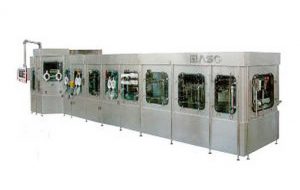The ASG aseptic filling technology typically involves several steps, which may vary depending on the specific requirements of the product and the filling machine. Some common steps in the aseptic filling process include:
 Pre-sterilization: Before filling begins, the containers and other equipment are sterilized to remove any bacteria or other microorganisms that could contaminate the product. This is typically done using steam, chemicals, or other sterilization methods.
Pre-sterilization: Before filling begins, the containers and other equipment are sterilized to remove any bacteria or other microorganisms that could contaminate the product. This is typically done using steam, chemicals, or other sterilization methods.- Filling: The containers are then filled with juice or other liquid product using a filling nozzle or other dispensing equipment. The filling process is carefully controlled to ensure that the containers are filled with the correct volume of product.
- Sealing: After filling, the containers are sealed to prevent contamination of the product. This is typically done using heat sealing or other sealing methods to create a tight, secure seal.
- Cooling: After sealing, the containers are typically cooled to help preserve the quality and freshness of the product. This is typically done using a cooling tunnel or other cooling equipment.
Overall, the aseptic filling process typically involves four main steps: pre-sterilization, filling, sealing, and cooling. These steps are designed to ensure that the product is filled and sealed in a sterile environment and that it remains fresh and safe for consumption.
